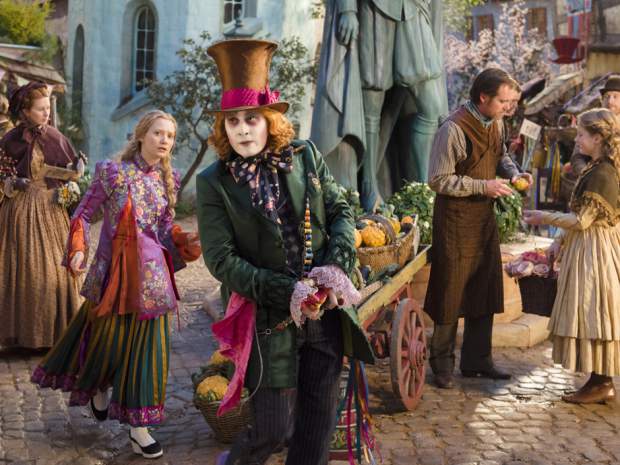After Tim Burton’s Alice in Wonderland made a billion dollars worldwide, the guarantee of Disney releasing a sequel was virtually certain. Six years later, our palates sufficiently cleansed, we can repeat the masochist ritual of seeing another Burton film with Alice Through the Looking Glass.
This new imbroglio features a completely unnecessary origin story and a new director (James Bobin, who directed the last two Muppets films). Burton produced the film, so it still features his typical kaleidoscope colour we’ve come to expect, the kind of CGI-drenched production that leaves one cold and dead inside.
Looking Glass never inspires words like “curious and curiouser” — because we all saw this money-making machine coming from a mile away, in an algorithmically predictable design of a Hollywood studio hungry to make another billion dollars.
Mia Wasikowska resumes the thankless job of playing Alice, who is now all grown up and following in the footsteps of her late father by sailing the high seas in his ship, The Wonder. Because Alice is a female captain in the 1800s, her activities stir patriarchal unrest at home, though the explicit feminist message here feels a lot less convincing given the colonial implications of her adventures.
Escaping her troubles, Alice returns to Wonderland (or Underland, if you prefer) through a mirror and encounters a sad, lost Mad Hatter (Johnny Depp), on the brink of death from depression. She requests help from Time (Sacha Baron Cohen), who owns a little time travelling thingamabob called the Cronoverse.
Because Time is cantankerous and inexplicably German in that stereotypical villain-like way, Alice steals it in an attempt to fix the Hatter’s past. She travels back and forward and back again, facing off against the irascible Iracebeth the Red Queen (Helena Bonham Carter), who seeks revenge on her sister Mirana (Anne Hathaway) using the Cronoverse.
Rounding out the cast are the many magical side-kicks, voiced by a plethora of British actors including Stephen Fry (Cheshire Cat) and Alan Rickman (Absolem, the caterpillar-cum-butterfly) in one of his final roles.
Being a Disney film, Looking Glass teaches kids values like being true to your family, standing by your friends, and accepting the past, but it focuses heavily on the morality stuff instead of meshing aesthetics to story, which could have made such lessons less tedious.
Wonderland is supposed to be some enchanting world. But it’s hard to find delight or meaning when Lewis Carroll’s original whimsy is treated as a half-forgotten backdrop in a self-serious story, one that contrives an emotional character arc for the Hatter, to whom we’re supposed to be sympathetic, despite him looking like Carrot Top caught in a bad acid trip.
Many of the film’s aesthetic decisions, like the Red Queen’s ridiculous oversized CGI head or Time’s ghastly steampunk get-up, will bother some viewers and mesmerize others. It’s all a matter of taste, of course. Not to mention money.
Cheap tricks — such as characterizing Time’s minions after the Minions — plague the film, but Burton can birth just about anything phantasmagorical at this point and have it be accepted at face value, as long as it makes money. That doesn’t make it any less disheartening that the rights for one of the most unique works of children’s literature belongs to a company that doesn’t respect or understand the absurdity of Carroll’s prose — but such thinking seems almost quaint and lofty at this point.

